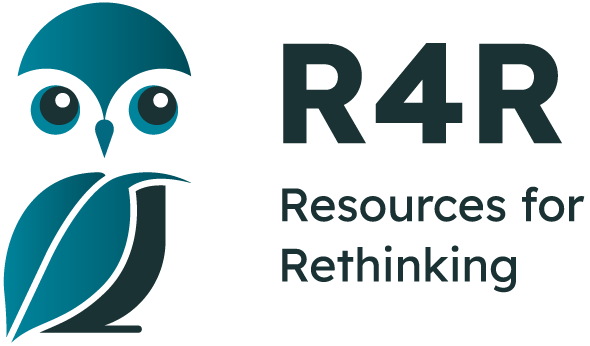- Home
- Tutorial
- Resource Guides
- Focus Areas
- LSF Programs
-
Professional
Development - Review Process
-
A project of LSF

Search for Resources
Description
This Guided Inquiry resource is designed for students to think critically about their own identity and how aspects of their identity are connected and woven into the greater whole. Students will be encouraged to think deeply about their place in the world and the reciprocal relationship between themselves and their greater community. This lesson is designed as a framework for discussion, and at each stage of the process, questions are welcomed and encouraged to be documented by the teacher. This would set the stage for deeper conversations around identity and the impacts of colonization.
The Inquiry lesson outline guides students through a series of activities designed to help them critically reflect on their identity and its connection to the greater community.
Students will:
- discuss a series of questions, then visualize their identity using a series of prompts, shapes and words
- watch the Medicine Wheel Teachings video, then reflect on each component of the medicine wheel - mental, emotional, physical and spiritual and how these connect to different aspects of their being
- discuss their connection to the land and Mother Earth with a provocation statement, preferably in an outdoor setting
- reflect on a series of provided questions either in a large or small group setting or independently
Students are encouraged to think critically about discussion circles as ways of being together in community and how that can foster a safe and brave space in tackling these conversations.
General Assessment
Recommendation of how and where to use it
Students learn about the Indigenous and Western perspectives of Two-Eyed Seeing. They will recognize how their pieces of identity are woven together using the foundation of a medicine wheel (Two-Eyed Seeing) rather than as separate components of a greater whole (Western View).
This lesson is a natural transition in beginning conversations around colonization and the impact of identity loss in Indigenous communities. As discussions in the classroom move forward, students can begin to think about imbalance when pieces of one’s identities are removed and the impact this can have on the overall individual and community. This discussion can also lend itself to discussing concepts of power, privilege, intersectionality, and positionality with the support of a safe and brave space created within the classroom.
Relevant Curriculum Units
The following tool will allow you to explore the relevant curriculum matches for this resource. To start, select a province listed below.
- Step 1Select a province
- Alberta
- Step 2Select a grade level
- Grade 6
- Step 3Select a subject
- English/Language Arts
- Step 4Relevant matches
- Oral Language: Listening and speaking form the foundation for literacy development and improve communication, collaboration, and respectful mutual understanding.
- Grade 7
- Step 3Select a subject
- English/Language Arts
- Step 4Relevant matches
- Explore Thoughts, Ideas, Feelings and Experiences
- Indigenous Languages and Cultures
- Step 4Relevant matches
- Blackfoot Language and Culture: Community Membership
- Grade 8
- Step 3Select a subject
- English/Language Arts
- Step 4Relevant matches
- Explore Thoughts, Ideas, Feelings and Experiences
- Respect, Support and Collaborate
- Grade 9
- Step 3Select a subject
- English/Language Arts
- Step 4Relevant matches
- Explore thoughts, ideas, feelings and experiences.
- British Columbia
- Step 2Select a grade level
- Grade 6
- Step 3Select a subject
- English/Language Arts
- Step 4Relevant matches
- Exploring and sharing multiple perspectives extends our thinking
- Grade 7
- Step 3Select a subject
- English/Language Arts
- Step 4Relevant matches
- Exploring and sharing multiple perspectives extends our thinking.
- Grade 8
- Step 3Select a subject
- English/Language Arts
- Step 4Relevant matches
- People understand text differently depending on their worldviews and perspective
- Grade 9
- Step 3Select a subject
- English/Language Arts
- Step 4Relevant matches
- People understand text differently depending on their worldviews and perspectives.
- Manitoba
- Step 2Select a grade level
- Grade 6
- Step 3Select a subject
- English/Language Arts
- Step 4Relevant matches
- Language as Power and Agency
- Indigenous Languages and Cultures
- Step 4Relevant matches
- Cultural and Linguistic Diversity: Specific Aboriginal Culture
- Grade 7
- Step 3Select a subject
- English/Language Arts
- Step 4Relevant matches
- Language as Power and Agency
- Indigenous Languages and Cultures
- Step 4Relevant matches
- Cultural and Linguistic Diversity: Specific Aboriginal Culture
- Grade 8
- Step 3Select a subject
- English/Language Arts
- Step 4Relevant matches
- Language as Power and Agency
- Indigenous Languages and Cultures
- Step 4Relevant matches
- Cultural and Linguistic Diversity: Specific Aboriginal Culture
- Cultural and Linguistic Diversity::Other Cultures: Connections and Influences
- Grade 9
- Step 3Select a subject
- English/Language Arts
- Step 4Relevant matches
- Explore thoughts, ideas, feelings, and experiences
- Indigenous Languages and Cultures
- Step 4Relevant matches
- Cultural and Linguistic Diversity: Specific Aboriginal Culture
- New Brunswick
- Step 2Select a grade level
- Grade 6
- Step 3Select a subject
- English/Language Arts
- Step 4Relevant matches
- Interactions
- Grade 7
- Step 3Select a subject
- English/Language Arts
- Step 4Relevant matches
- Interactions
- Grade 8
- Step 3Select a subject
- English/Language Arts
- Step 4Relevant matches
- Interactions
- Grade 9
- Step 3Select a subject
- English/Language Arts
- Step 4Relevant matches
- Interactions
- Newfoundland & Labrador
- Step 2Select a grade level
- Grade 6
- Step 3Select a subject
- English/Language Arts
- Step 4Relevant matches
- Speaking & Listening
- Grade 7
- Step 3Select a subject
- English/Language Arts
- Step 4Relevant matches
- Speaking & Listening
- Grade 8
- Step 3Select a subject
- English/Language Arts
- Step 4Relevant matches
- Speaking and Listening
- Grade 9
- Step 3Select a subject
- English/Language Arts
- Step 4Relevant matches
- Speaking and Listening
- Northwest Territories
- Step 2Select a grade level
- Grade 6
- Step 3Select a subject
- English/Language Arts
- Step 4Relevant matches
- Exploring and sharing multiple perspectives extends our thinking
- Grade 7
- Step 3Select a subject
- English/Language Arts
- Step 4Relevant matches
- Exploring and sharing multiple perspectives extends our thinking.
- Grade 8
- Step 3Select a subject
- English/Language Arts
- Step 4Relevant matches
- People understand text differently depending on their worldviews and perspective
- Grade 9
- Step 3Select a subject
- English/Language Arts
- Step 4Relevant matches
- People understand text differently depending on their worldviews and perspectives.
- Nova Scotia
- Step 2Select a grade level
- Grade 6
- Step 3Select a subject
- English/Language Arts
- Step 4Relevant matches
- Listening and Speaking
- Grade 8
- Step 3Select a subject
- English/Language Arts
- Step 4Relevant matches
- English Language Arts 8
- Grade 9
- Step 3Select a subject
- English/Language Arts
- Step 4Relevant matches
- Speaking & Listening
- Nunavut
- Step 2Select a grade level
- Grade 6
- Step 3Select a subject
- English/Language Arts
- Step 4Relevant matches
- Celebrate and Build Community
- Grade 7
- Step 3Select a subject
- English/Language Arts
- Step 4Relevant matches
- Comprehend and Respond
- Grade 8
- Step 3Select a subject
- English/Language Arts
- Step 4Relevant matches
- Access and Explore
- Grade 9
- Step 3Select a subject
- English/Language Arts
- Step 4Relevant matches
- Access and Explore
- Ontario
- Step 2Select a grade level
- Grade 6
- Step 3Select a subject
- English/Language Arts
- Step 4Relevant matches
- Language: Foundations of Language
- Grade 7
- Step 3Select a subject
- English/Language Arts
- Step 4Relevant matches
- Language: Foundations of Language
- Grade 8
- Step 3Select a subject
- English/Language Arts
- Step 4Relevant matches
- Language: Foundations of Language
- Grade 9
- Step 3Select a subject
- English/Language Arts
- Step 4Relevant matches
- Comprehension: Understanding and Responding to Texts
- Prince Edward Island
- Step 2Select a grade level
- Grade 6
- Step 3Select a subject
- English/Language Arts
- Step 4Relevant matches
- Speaking and Listening
- Grade 7
- Step 3Select a subject
- English/Language Arts
- Step 4Relevant matches
- Speaking and Listening
- Grade 8
- Step 3Select a subject
- English/Language Arts
- Step 4Relevant matches
- Speaking and Listening
- Grade 9
- Step 3Select a subject
- English/Language Arts
- Step 4Relevant matches
- Speaking and Listening
- Quebec
- Step 2Select a grade level
- Grade 7
- Step 3Select a subject
- English/Language Arts
- Step 4Relevant matches
- Uses language/talk to communicate and to learn
- Grade 8
- Step 3Select a subject
- English/Language Arts
- Step 4Relevant matches
- Uses language/talk to communicate and to learn
- Grade 9
- Step 3Select a subject
- English/Language Arts
- Step 4Relevant matches
- Uses language/talk to communicate and to learn
- Saskatchewan
- Step 2Select a grade level
- Grade 6
- Step 3Select a subject
- English/Language Arts
- Step 4Relevant matches
- Comprehend and Respond
- Grade 7
- Step 3Select a subject
- English/Language Arts
- Step 4Relevant matches
- Comprehend and Respond
- Grade 9
- Step 3Select a subject
- English/Language Arts
- Step 4Relevant matches
- Comprehend and Respond
- Yukon Territory
- Step 2Select a grade level
- Grade 6
- Step 3Select a subject
- English/Language Arts
- Step 4Relevant matches
- Exploring and sharing multiple perspectives extends our thinking
- Grade 7
- Step 3Select a subject
- English/Language Arts
- Step 4Relevant matches
- Exploring and sharing multiple perspectives extends our thinking.
- Grade 8
- Step 3Select a subject
- English/Language Arts
- Step 4Relevant matches
- People understand text differently depending on their worldviews and perspective
- Grade 9
- Step 3Select a subject
- English/Language Arts
- Step 4Relevant matches
- People understand text differently depending on their worldviews and perspectives.
Themes Addressed
Human Rights (2)
- Cultural Diversity
- Social Justice
Indigenous Knowledge (1)
- Etuaptmumk/Two-Eyed Seeing

